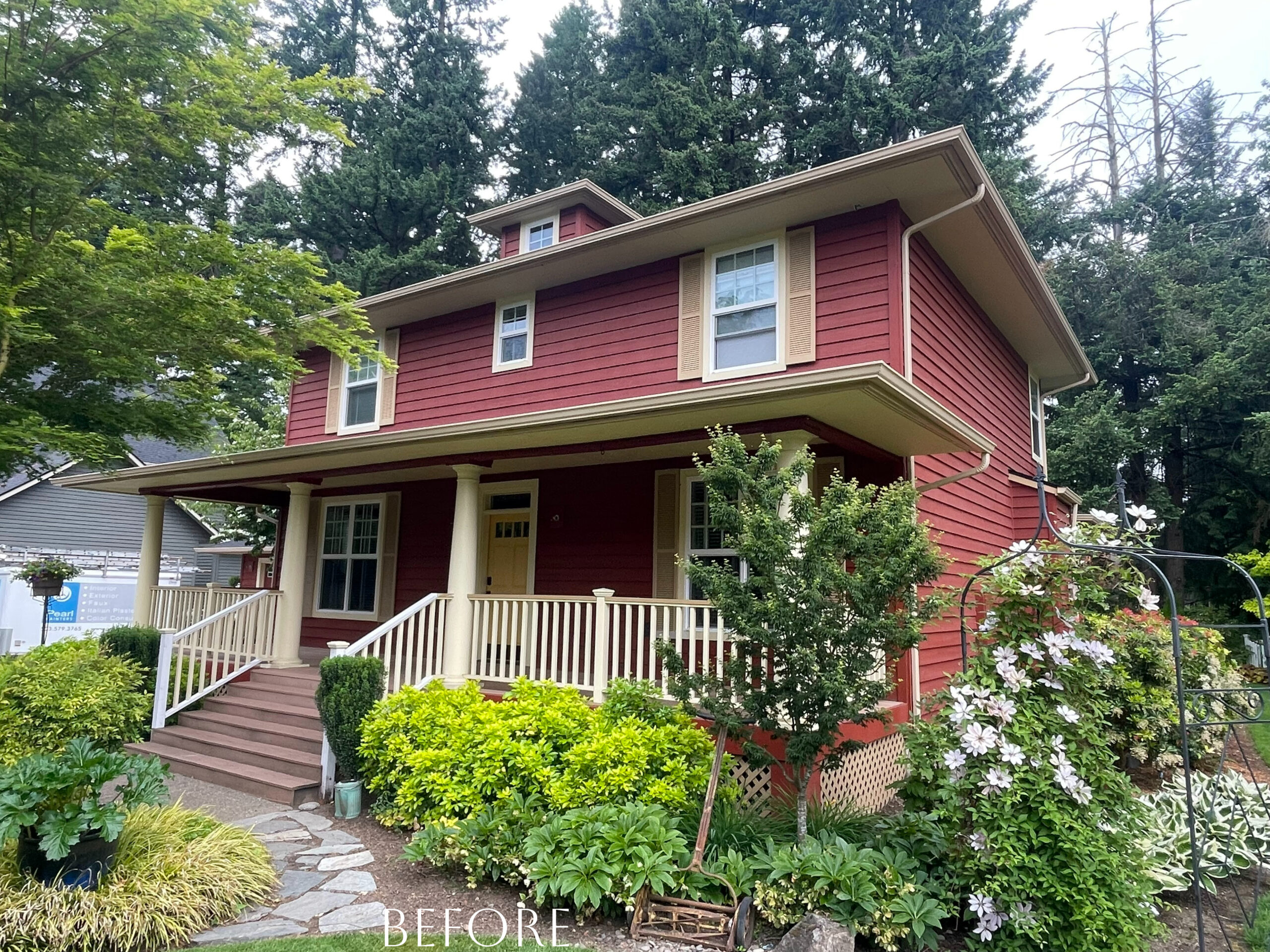Common Exterior Paint Problems
We asked our team of exterior painting specialists to identify some of the most common issues they’ve found when inspecting exterior paintwork at homes in the Portland area. Today, we’re going to share those real-life examples and help you spot the signs that your home’s paint job is failing and needs attention!
Let’s start with an easy one:
We know that many homeowners wonder, “How often should I paint my house?” This question is directed toward our Portland painting team often. And the answer depends on the current state of your home’s exterior, but generally we recommend getting your house painted every 7 to 10 years. If it’s been more than 10 years since your home’s exterior was painted, then it’s time to reach out to a professional painter and get a quote.
Remember that exterior house paint is about much more than just aesthetic. It acts as your home’s skin, as its external protective layer. It’s what keeps the structure of your home protected, and that’s why it’s so important to pay attention to its current state and take good care of it.
The very first thing you need to do is determine the paint issues that the exterior of your home has. This includes:
We challenge you to take our 90 second challenge once you’ve read through this post. Simply go outside and look for each exterior paint failure described below. We have included full descriptions and photos to make the challenge as straightforward as possible.
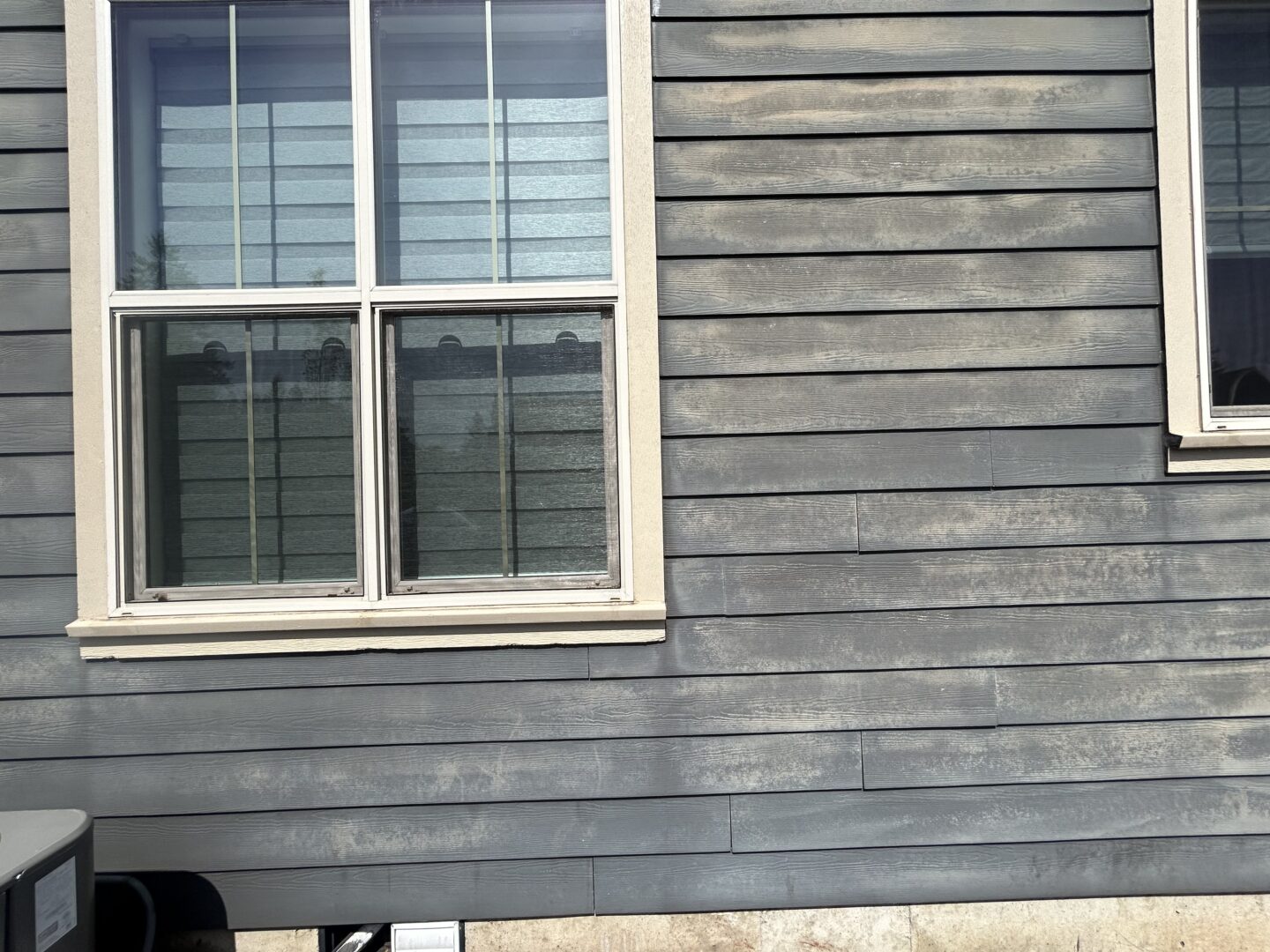
Fading Paint
Exterior paint starts to fade mainly because it’s constantly battling the elements—sunlight, rain, and temperature changes. The sun’s UV rays break down the paint’s color over time, making it look dull and washed out. Moisture from rain and humidity can seep into the paint, causing it to degrade and lose its luster. Plus, the constant expansion and contraction from temperature changes can wear the paint out even more.
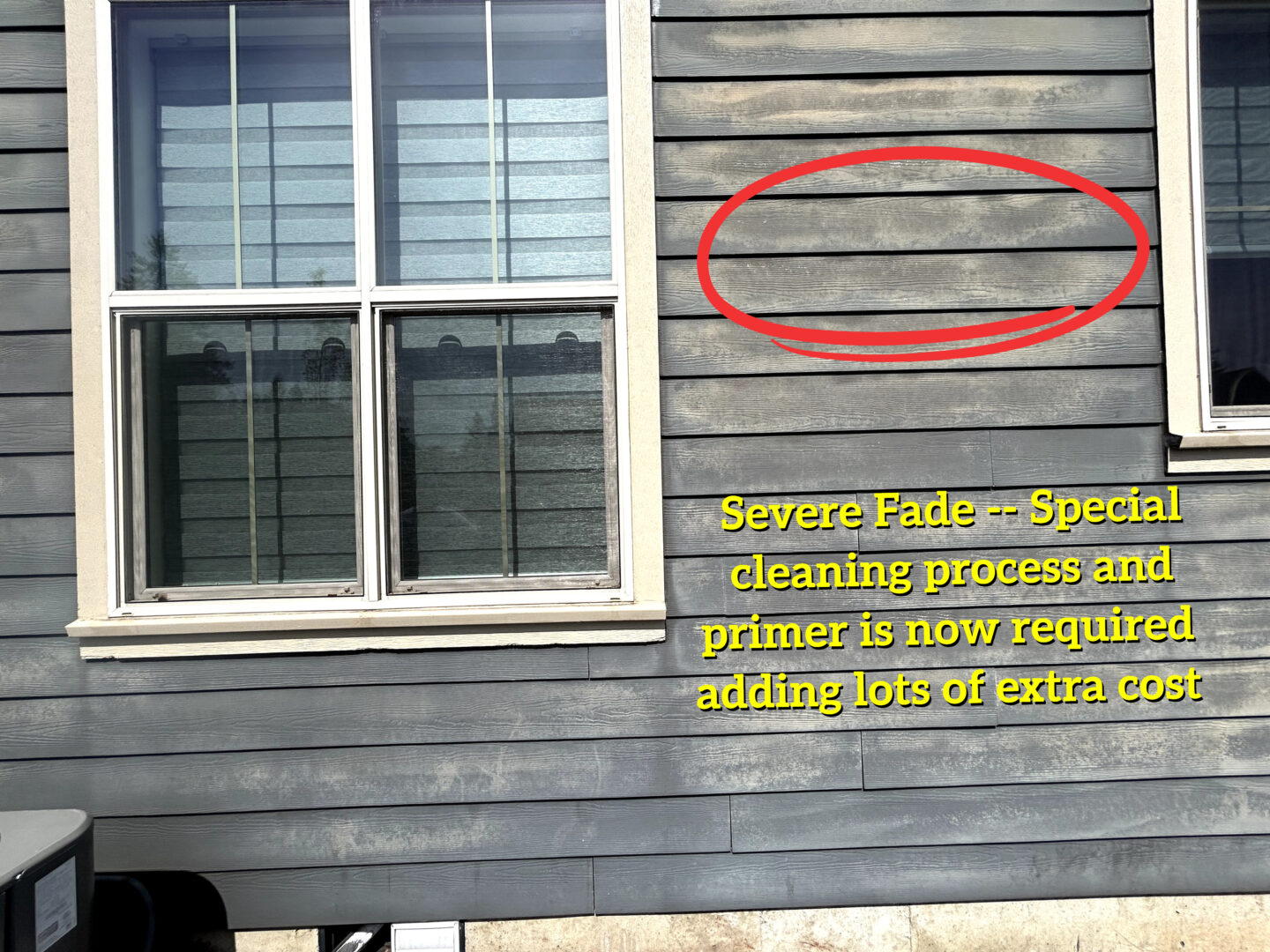
If you ignore fading paint, it can lead to bigger problems. Not only does it make your home look less appealing, but it also leaves the underlying surfaces exposed to potential damage. Without that protective paint layer, materials like wood, stucco, or siding can start to rot, mold, or suffer structural damage. So, taking care of fading paint early can save you a lot of trouble and keep your home looking great and staying strong.
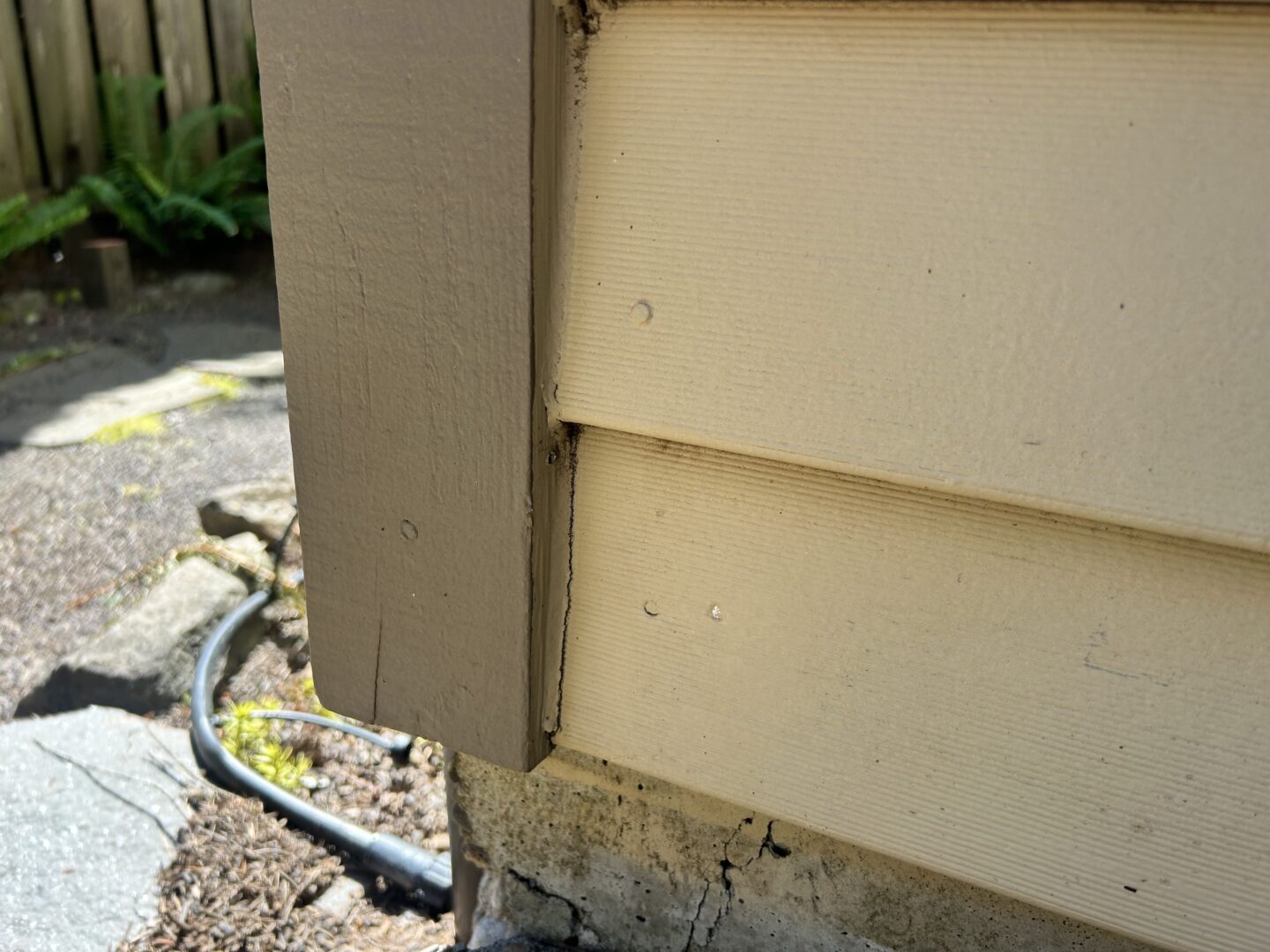
Caulking
Caulking can fail for a few reasons, like age, weather, or poor initial application. Over time, caulking can dry out, crack, and lose its flexibility, especially if it’s exposed to harsh sunlight, rain, or extreme temperatures. If the caulking wasn’t applied properly in the first place, it might not adhere well or fill gaps correctly, leading to early failure.
When caulking fails, it can let water seep into the gaps it was supposed to seal. This moisture can get behind your exterior paint, causing it to bubble, peel, or even develop mold.

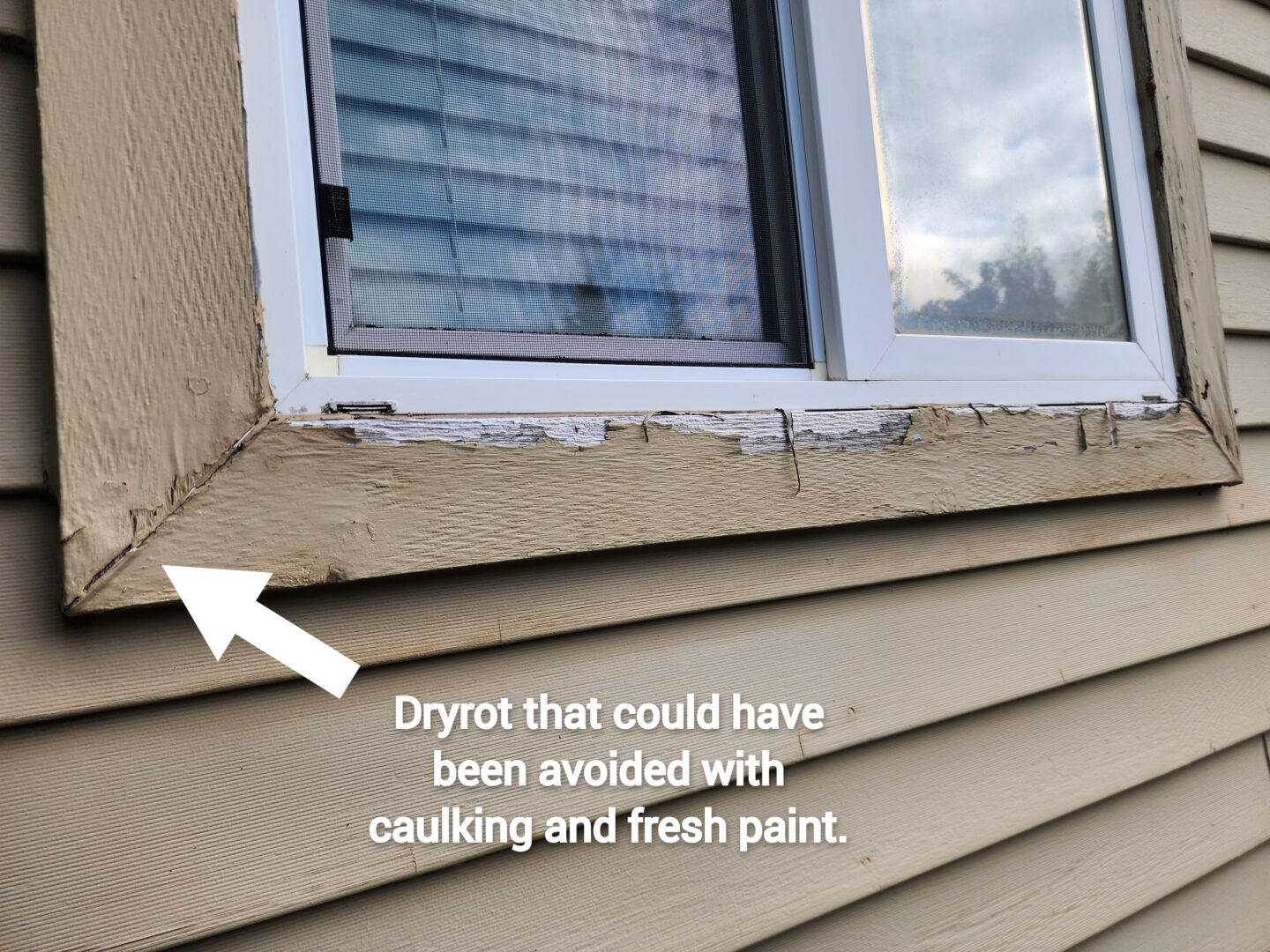
If left unaddressed, these issues can spread, making your home look shabby and potentially leading to more serious damage like wood rot or structural problems. So, keeping an eye on your caulking and fixing any issues promptly can save you a lot of headaches and help maintain your home’s exterior.
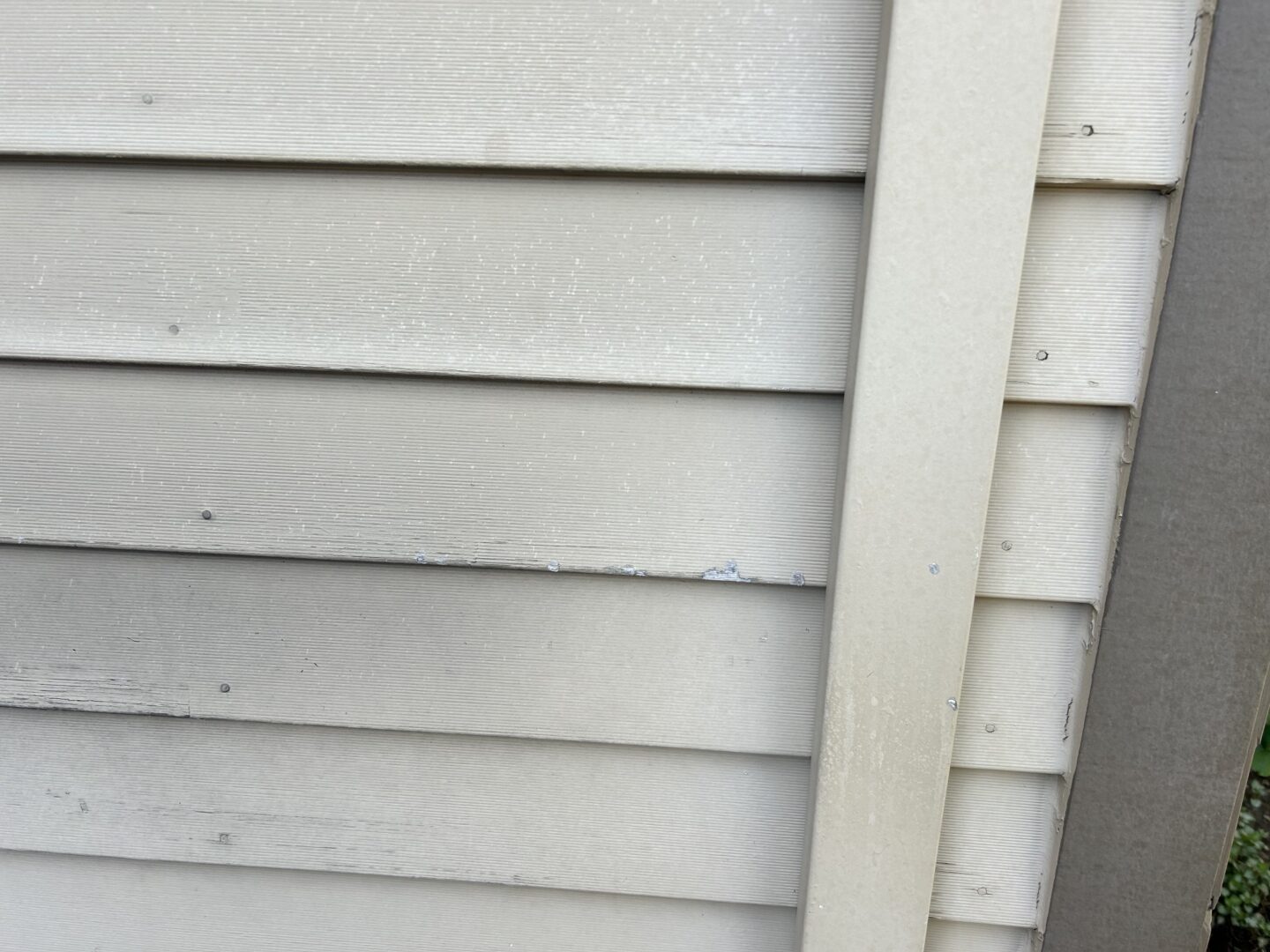
Mold, Mildew, and Bugs
Mold, mildew, and bugs can become quite the troublemakers for your exterior paintwork. When your paint starts to wear down or crack, it creates the perfect opportunity for moisture to sneak in, setting up a cozy environment for mold and mildew to thrive. These fungi can spread quickly, leaving unsightly stains and causing the paint to deteriorate even faster.
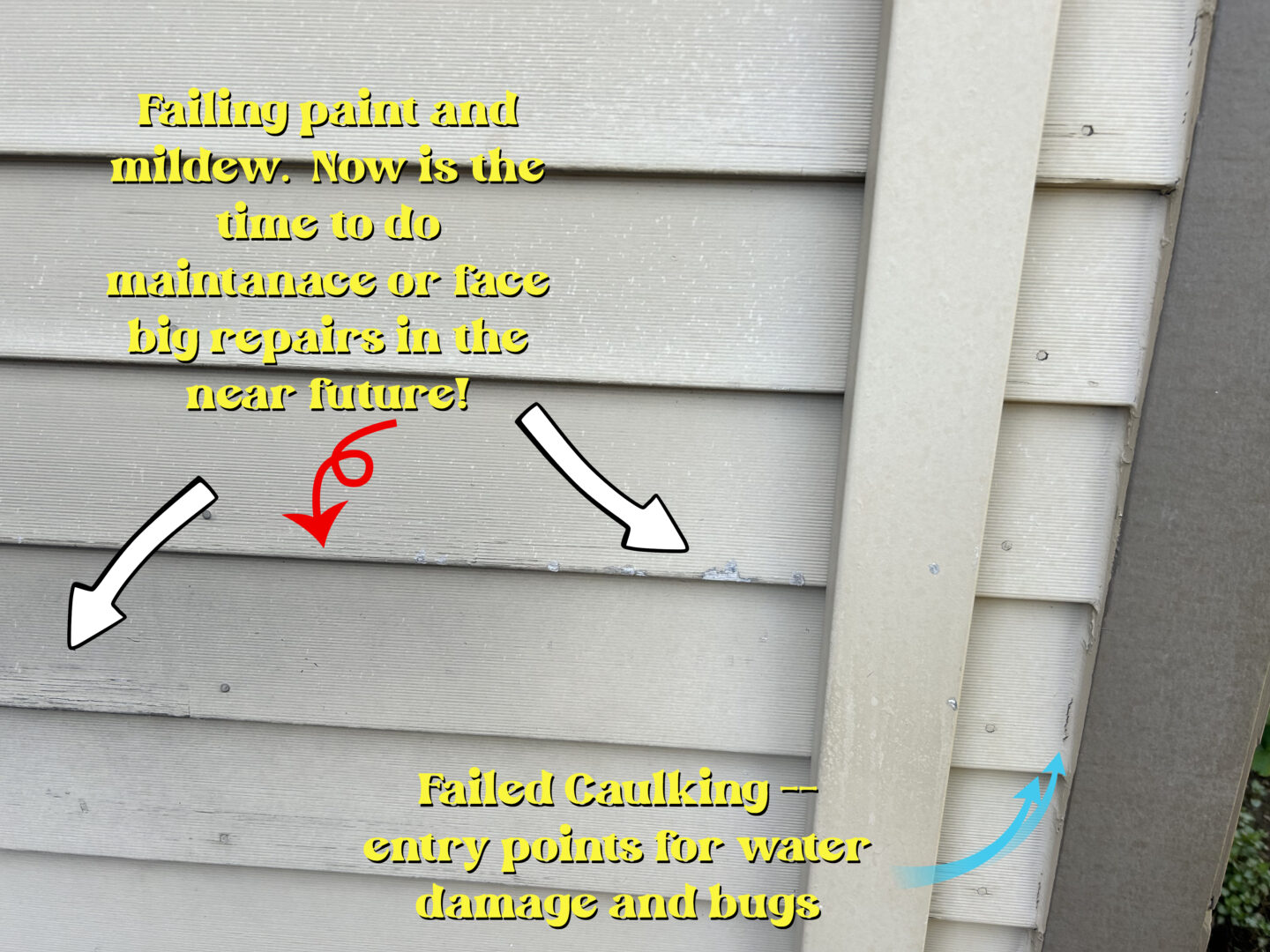
On top of that, bugs love to find little nooks and crannies to call home. Insects can burrow into these weak spots, causing further damage and potentially even finding their way inside your home. Keeping your exterior paint in good condition not only keeps your house looking sharp but also helps prevent these pesky problems from taking hold and causing more significant issues down the line.
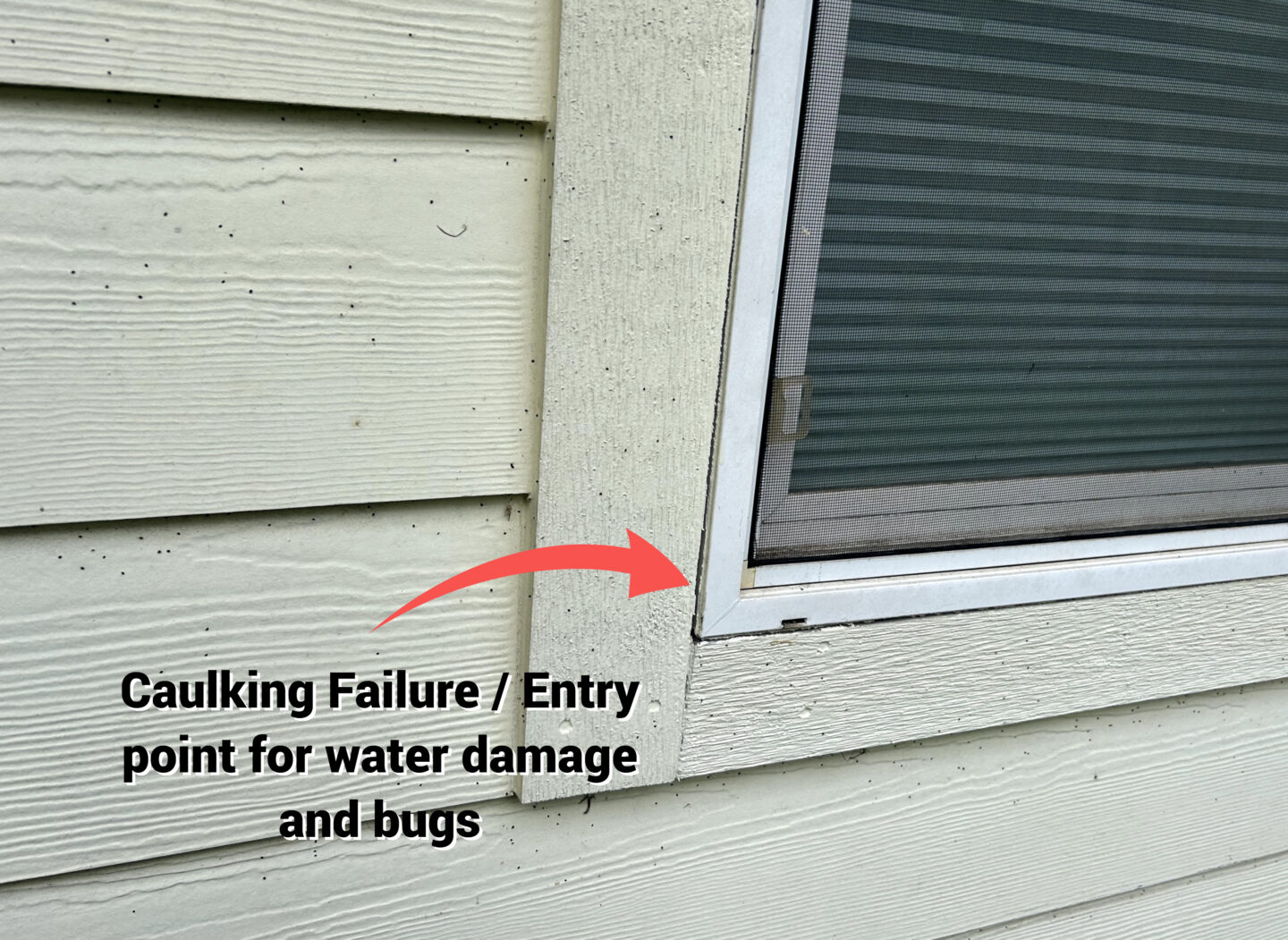
These little cracks and gaps may not look like much, but they can let moisture seep into the wood, starting a slow but steady process of rot and decay. Once moisture penetrates the wood, it creates the perfect environment for fungi and bacteria to thrive, breaking down the wood fibers from within. Over time, this can cause the wood to soften, crumble, and lose its structural integrity. If left unchecked, rotting wood can lead to more extensive damage, compromising the safety and stability of your home.
Flaking, Peeling, and Crumbling
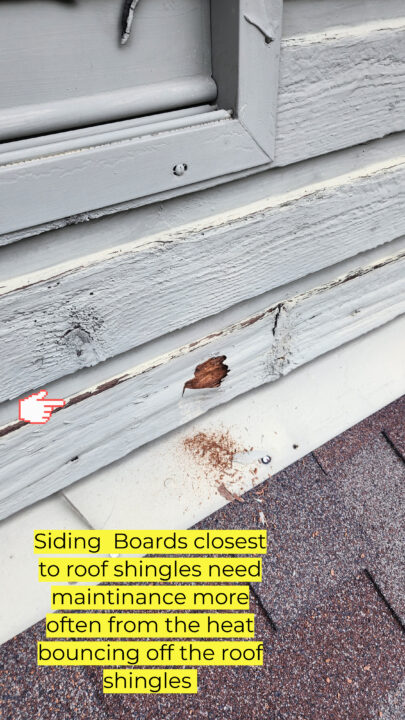
In this particular case, the siding boards had been neglected for so long that the continued exposure to heat from the roof shingles caused extensive damage. Make sure to check those hard to reach areas high up on your house regularly because they often bear the brunt of damage from the elements.
As you can see in the video above, the work required to save this home’s exterior was extensive. The siding and bad fascia board had to be completely replaced because the existing wood was crumbling away underneath a thin layer of flaking, old paint. If the exterior paint had been renewed earlier, the siding might have been saved and the repair costs considerably reduced.
Don't Wait to Repaint!
The ultimate cause of exterior paint failure often boils down to one simple factor: waiting too long to address common issues. Many homeowners underestimate the importance of regular maintenance and timely repairs, allowing small problems to escalate into major headaches over time. Whether it’s ignoring signs of fading, peeling, or cracking paint, or neglecting to fix deteriorating caulking or wood rot, delaying action can have serious consequences for your home’s exterior. By the time paint starts to flake away, or mold and mildew take hold, the damage may already be extensive, requiring costly repairs and significantly impacting your home’s appearance and value.
Take the 90 Second Challenge
Now that you understand the issues that can arise with your exterior paint and know what they look like, it’s time to go outside.
Simply take 90 seconds to walk around your home. It really won’t take more time than that. Look for peeling, chipping, flaking, or crumbling paint. Look for mold or mildew. Look for access points where bugs are or could be getting inside. Look for fading paint. See any gaps or cracks in your caulking?
Take note of everything that you see. You could even write a quick note on your phone (e.g. fading paint on the east side of the house, chipping paint near the garage door, caulking separated on the living room windows, etc.)
Don’t wait until it’s too late—take proactive steps to address exterior paint issues as soon as they arise, saving yourself time, money, and stress in the long run. That’s where we come in. Get in touch today so that we can evaluate the current status of your home’s exterior paint and put together a no-obligation estimate. And then you’re on your way to being thrilled with your home’s exterior, just like these customers we’ve served below:

Take a look at some of the incredible transformations we’ve undertaken in Portland, Beaverton, Tigard, and beyond!
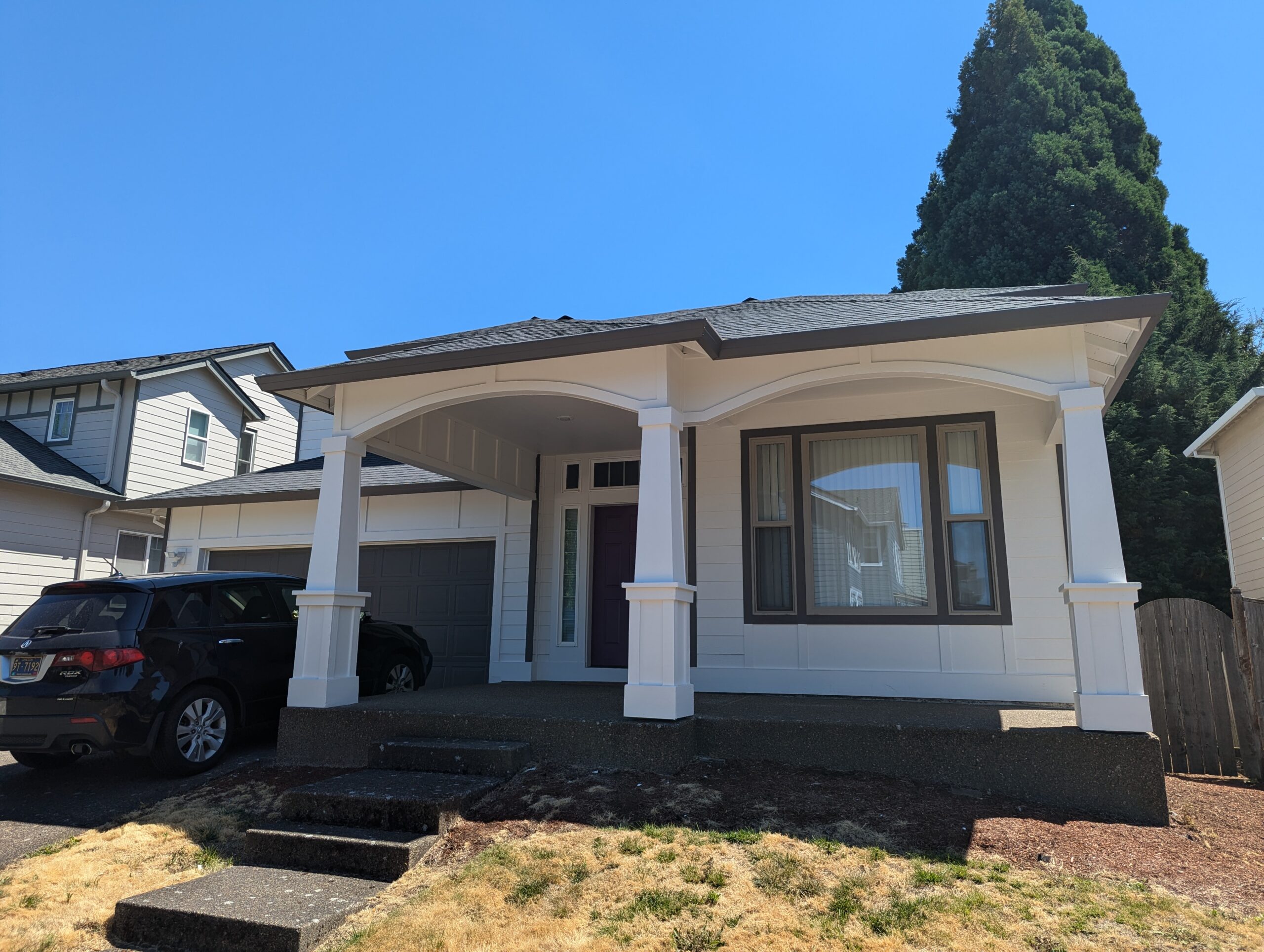
A Bold, Modern Exterior Painting Project in Clackamas
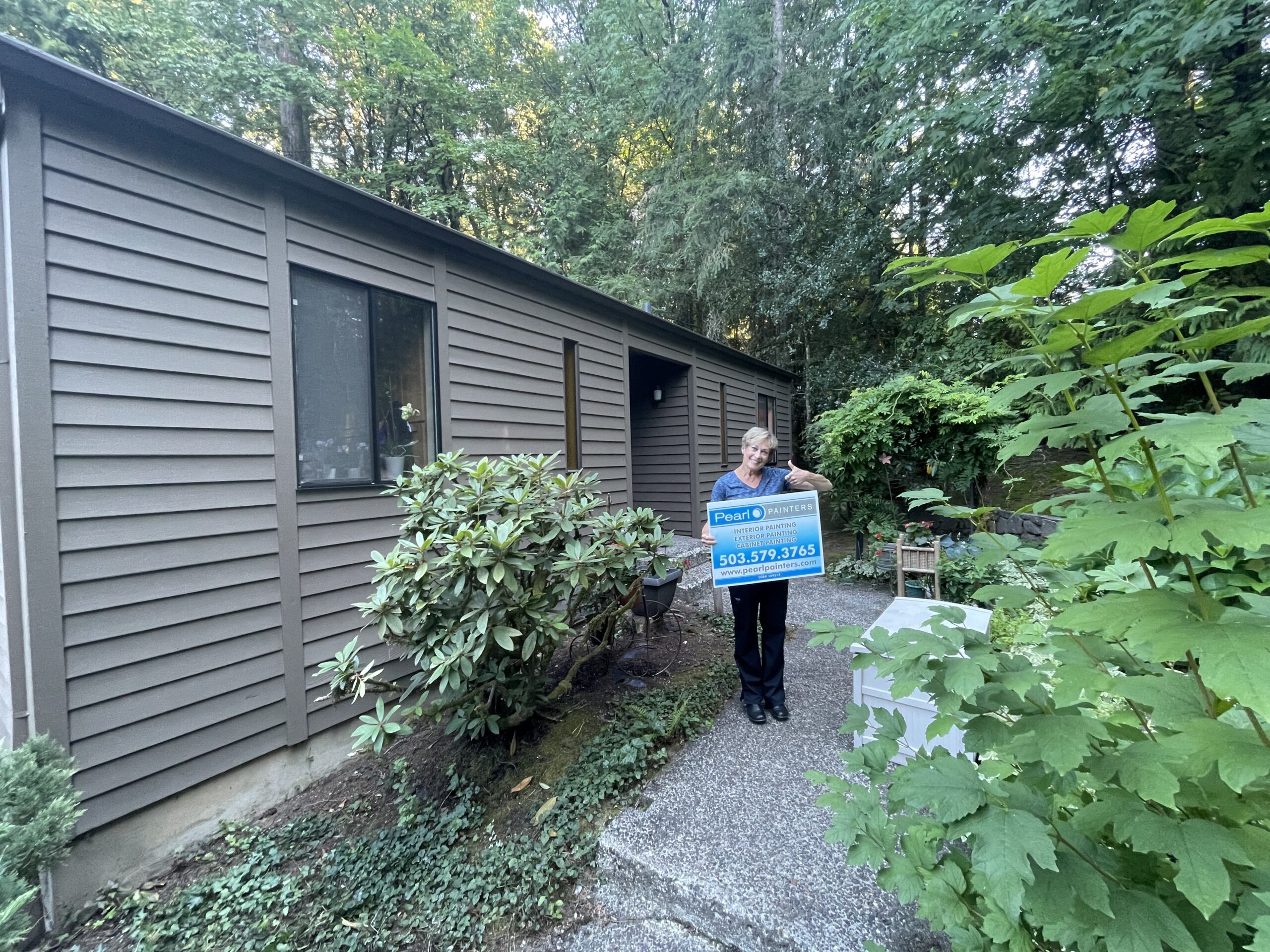
Exterior Paint Project Gives a Fresh Feel to This Portland Home
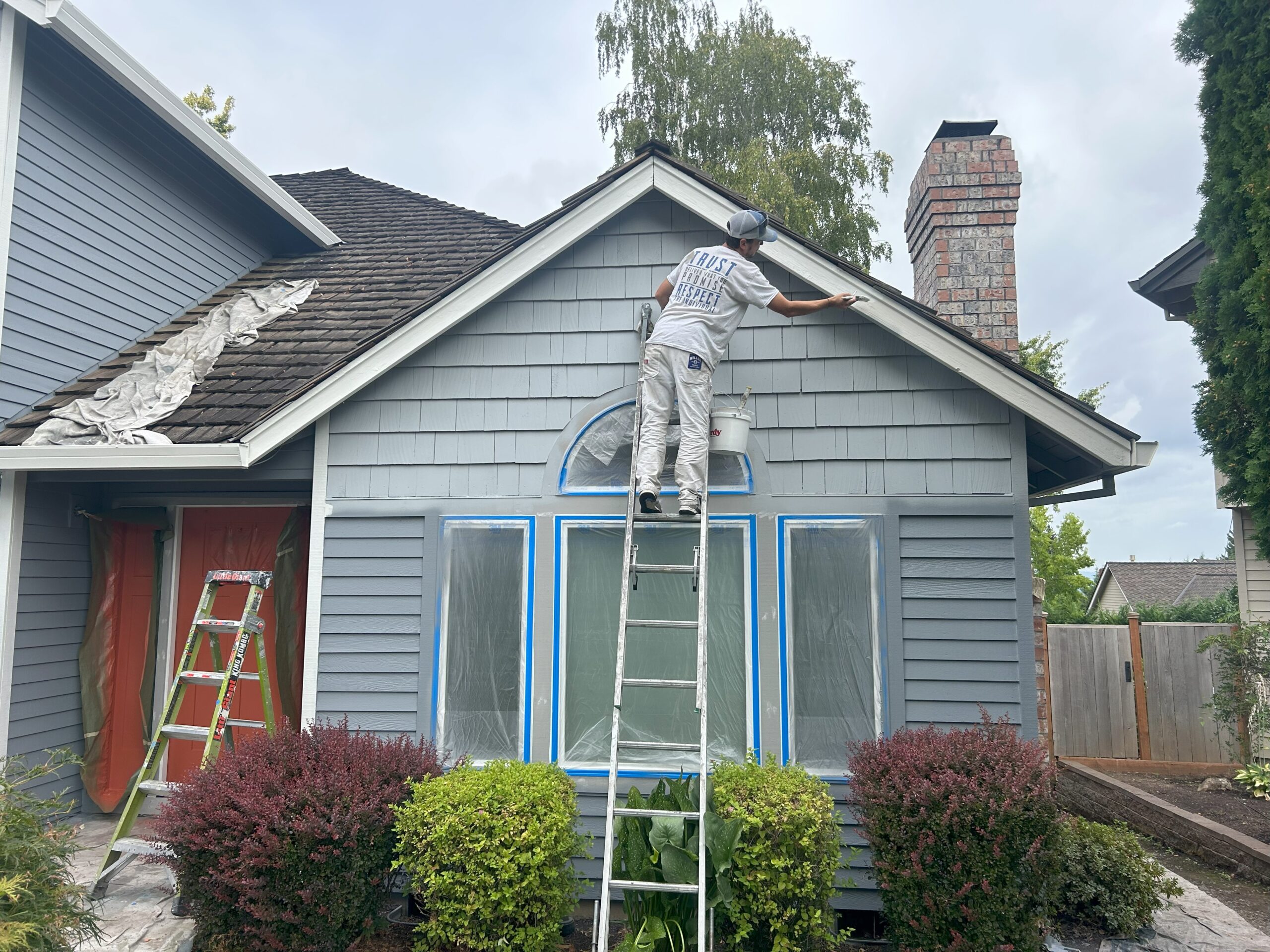
Charming Beaverton home in Cooper Mountain Neighborhood Got a Stunning Exterior Paint Makeover

Fresh Transformation in Whitford Neighborhood, Portland OR 97223!

Rising Above Challenges: A Remarkable Home Maintenance Story
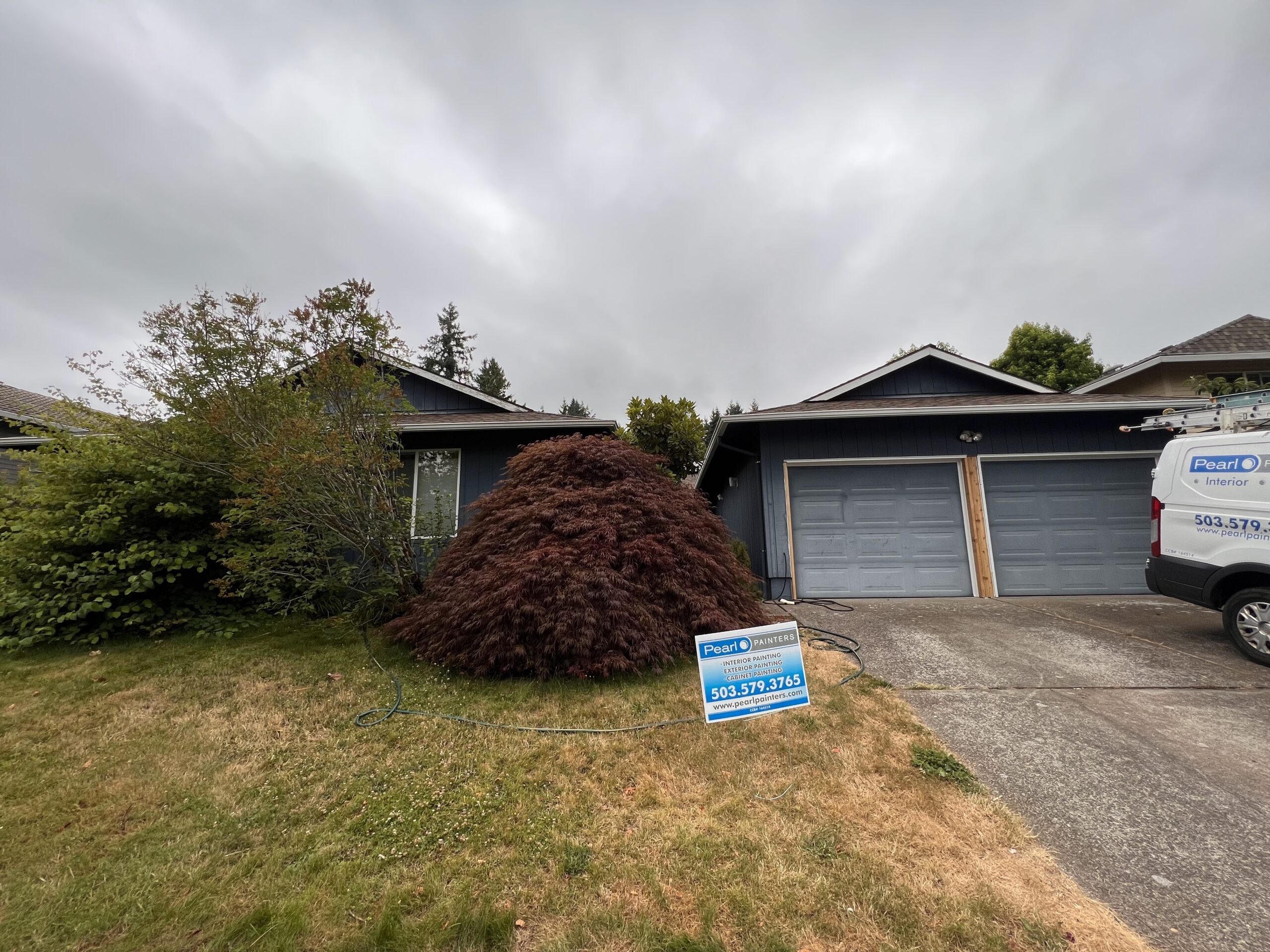
Restoring Beauty and Protecting Homes: A Success Story in Cedar Mill, Portland, Oregon
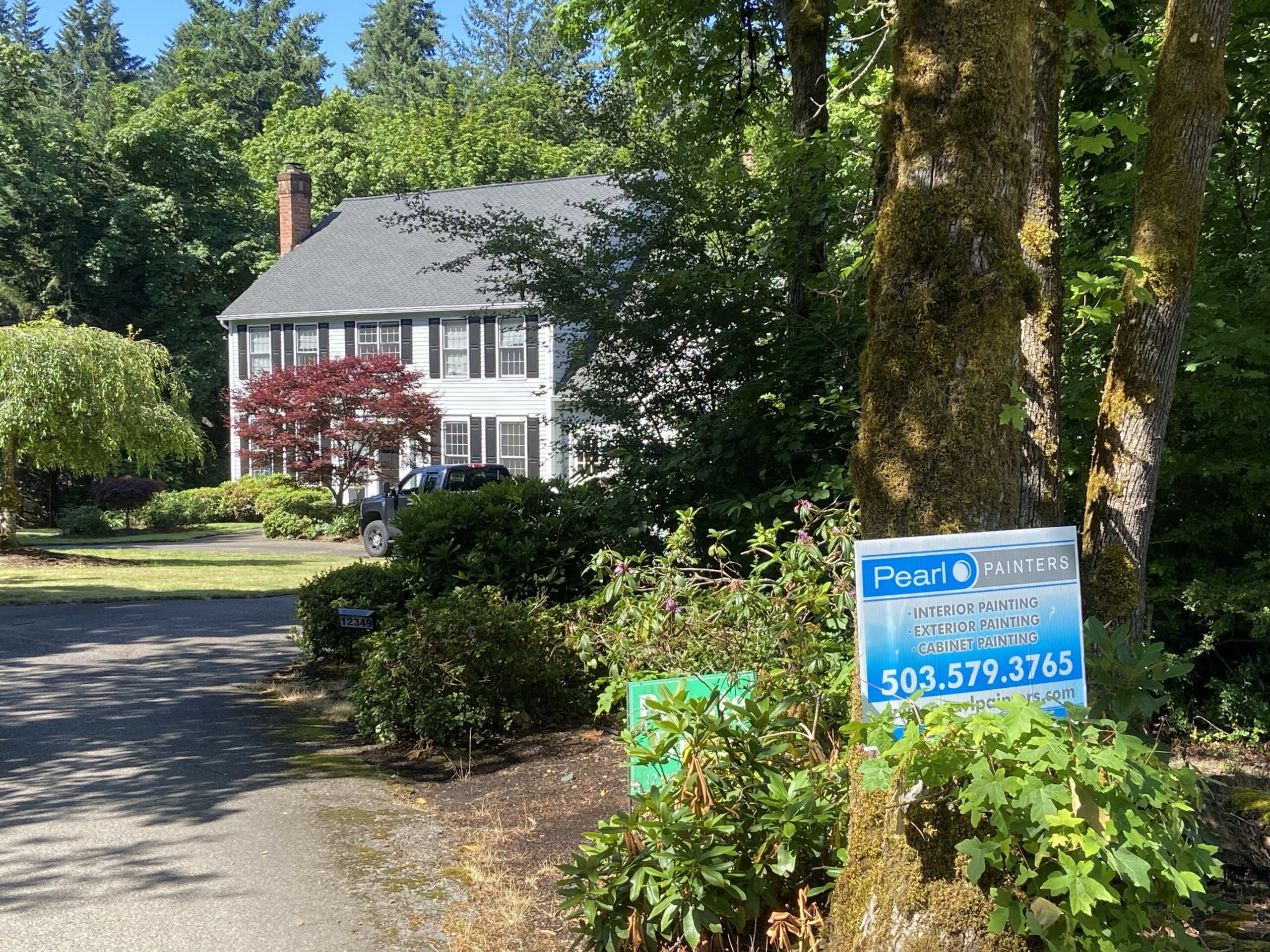
Revitalizing a Home in West Portland Park, Lake Oswego, Oregon: A Painting Journey with Chris.

A Portland Home’s Transformation: A Tale of Trust, Timeliness, and Top-notch Workmanship

Bull Mountain home in Tigard takes curb appeal to the next level.
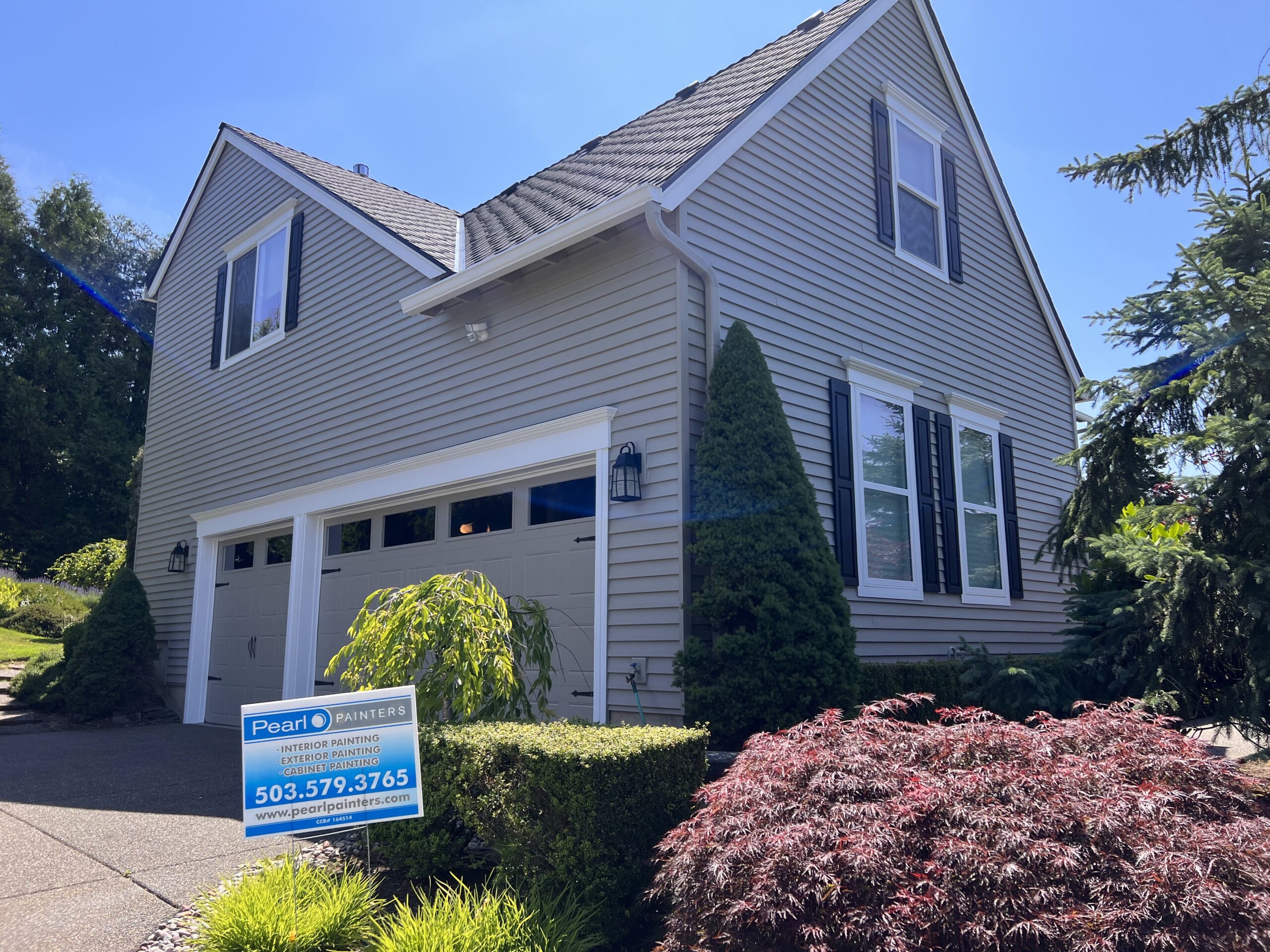
Giving This Bull Mountain Home a Vibrant Makeover: A Client’s Journey to Rejuvenating their Tigard Residence
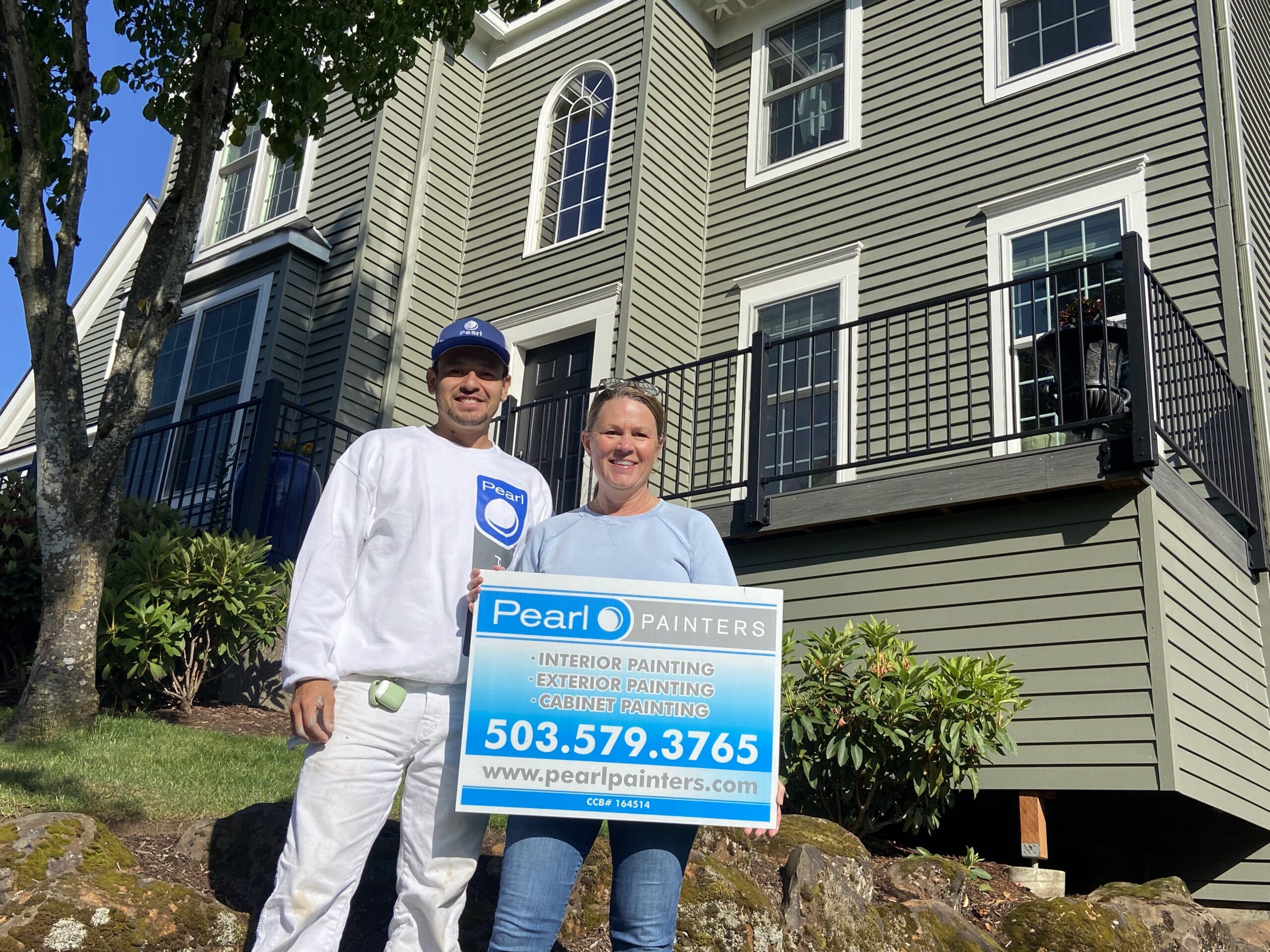
Preserving Beauty: Bull Mountain Neighborhood Painting Project
